Keep your pothos houseplant healthy by avoiding these commonly-made mistakes
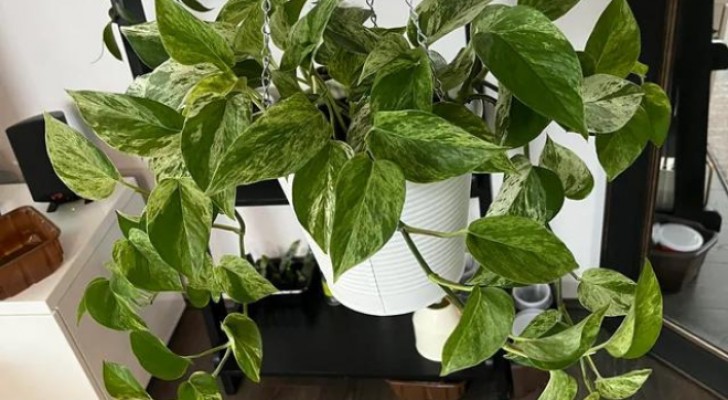
Highly robust and low-maintenance, pothos is one of the easiest houseplants to grown and is very popular. That said, this plant also has specific needs which need to be taken care of to keep it at its best
An evergreen climbing plant, pothos is native to Thailand and the Solomon Islands and is characterized by its large oval or heart-shaped leaves, which are also firm, slightly waxy and can be colored white, yellow or pink. Pothos is frequently put on the tops of furniture and high shelves, or placed in hanging pots which allow its stems to hang downward.
As already mentioned, this plant is low-maintenance, but it is still necessary to take care of its basic needs.
So what are the most common mistakes made in the cultivation of this highly ornamental plant and how can we avoid making them? Keep reading to find out more:
1. Wrong pot size
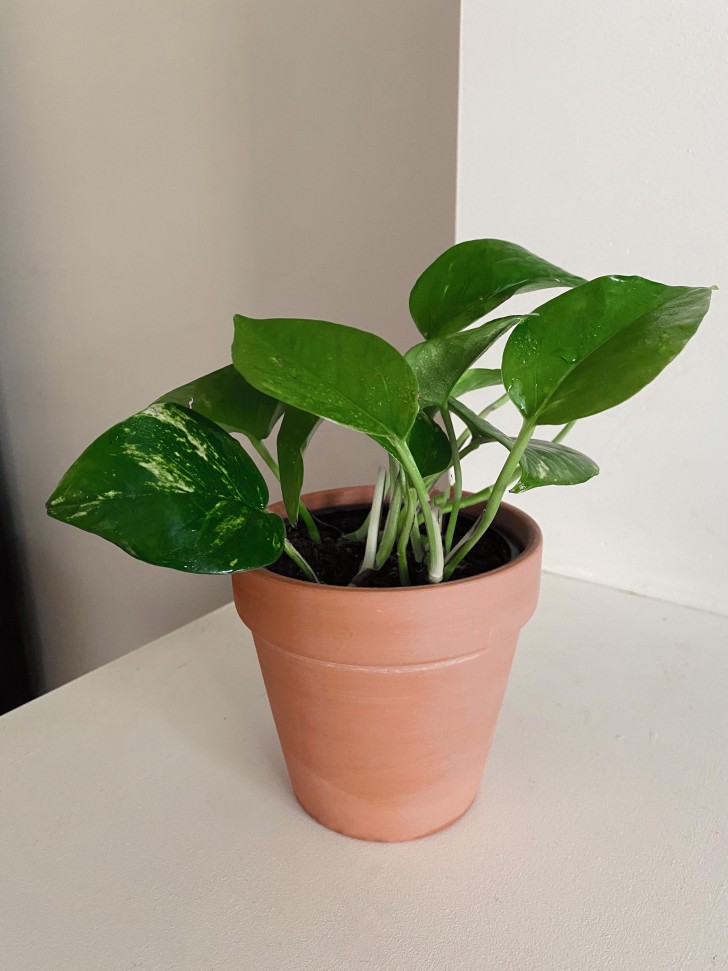
Pothos requires a small pot and you should avoid using an overly-large pot for your plant, since its roots take up very little space.
After two years, however, the roots will have grown to the point that repotting will be necessary into a slightly larger pot. Failing to do this could cause your plant to suffer and the leaves will start to fall off. Chose a plastic pot if you hang up your pothos. Using a terracotta pot will be more suitable if you want to keep the ambient temperature constant.
2. Dust

Pothos is usually placed on high shelves, where dust readily and quickly accumulates. Given this, it is important to dust the plant regularly to ensure dust does not interfer with the plant's ability to photosynthesize. Keep dust and parasites away from your plant by swabbing its leaves with a cotton ball or pad soaked in a solution of water and Marseille soap.
3. Failure to prune
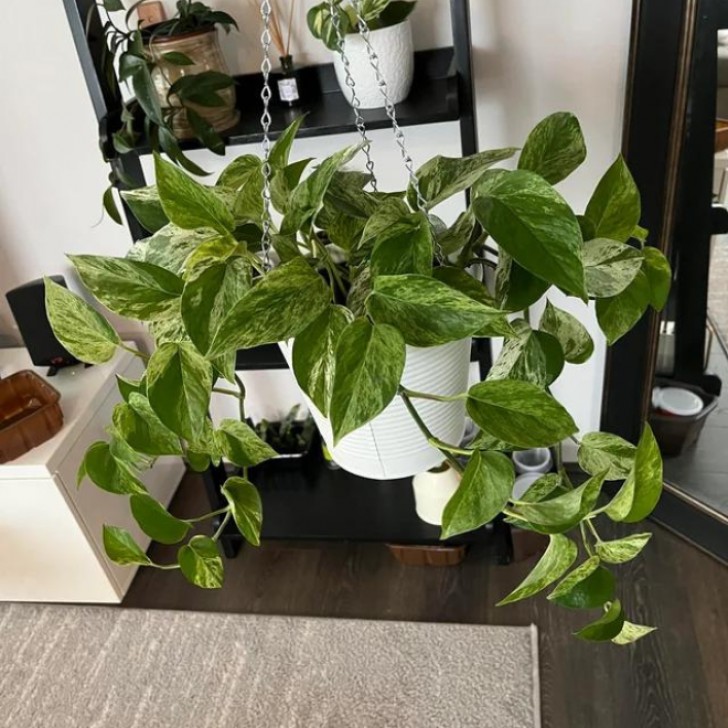
If the stems of your pothos begin to get too long and it develops a "unkempt" appearance, it is time to prune your plant. Pruning will also encourage growth and eliminate any diseased or damaged parts.
4. Overwatering
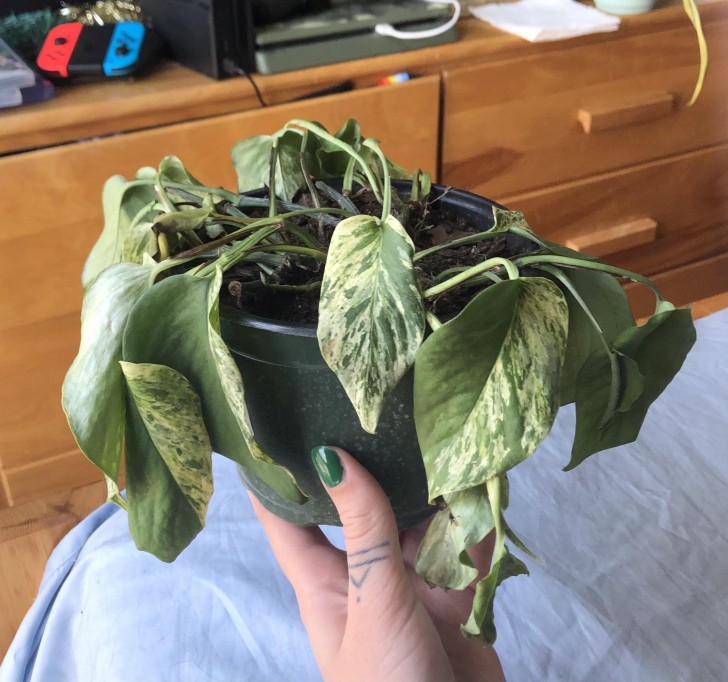
Overwatering can also damage your pothos plant. Pothos can be grown in water, but this requires constant monitoring. If grown in potting soil, make sure that the soil is near-dry before watering the plant (to avoid the development of root rot).
Also pay attention to the type of water you use: water that is excessively rich in minerals can cause discoloration of the leaves and the development of a white crust on the surface of the soil.
5. Direct sunlight
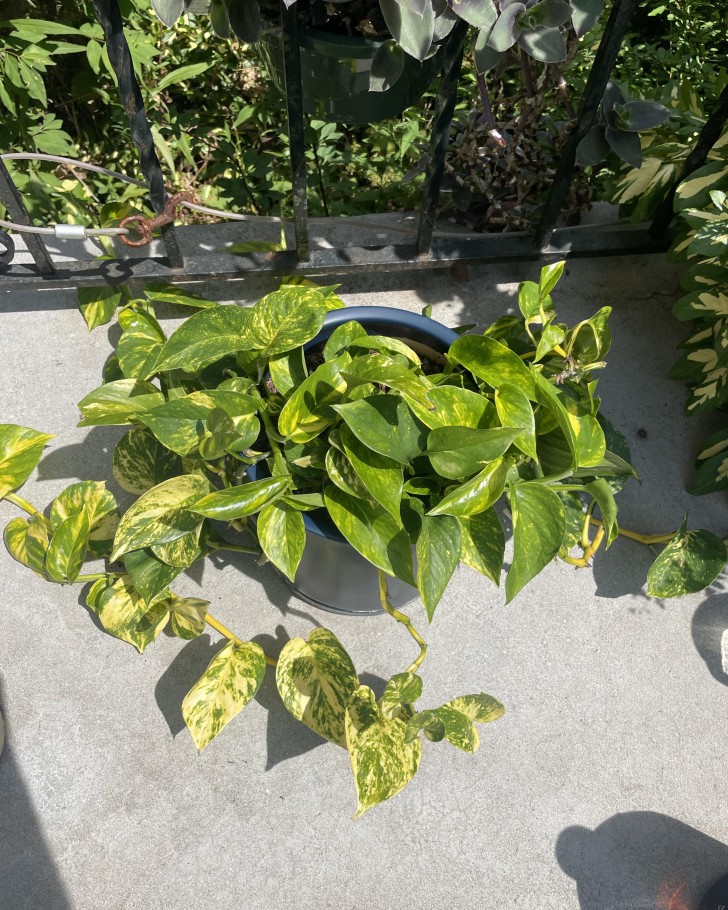
It is normal to believe that plants need a lot of sunlight to grow properly, but pothos is a species that does not like too much direct sunlight. Being a plant of tropical origin, pothos prefers partial shade and excessive exposure to the sun's rays could cause the dark or rust-colored spots to form on the leaves.
Now you're informed, does your pothos have any of these problems?